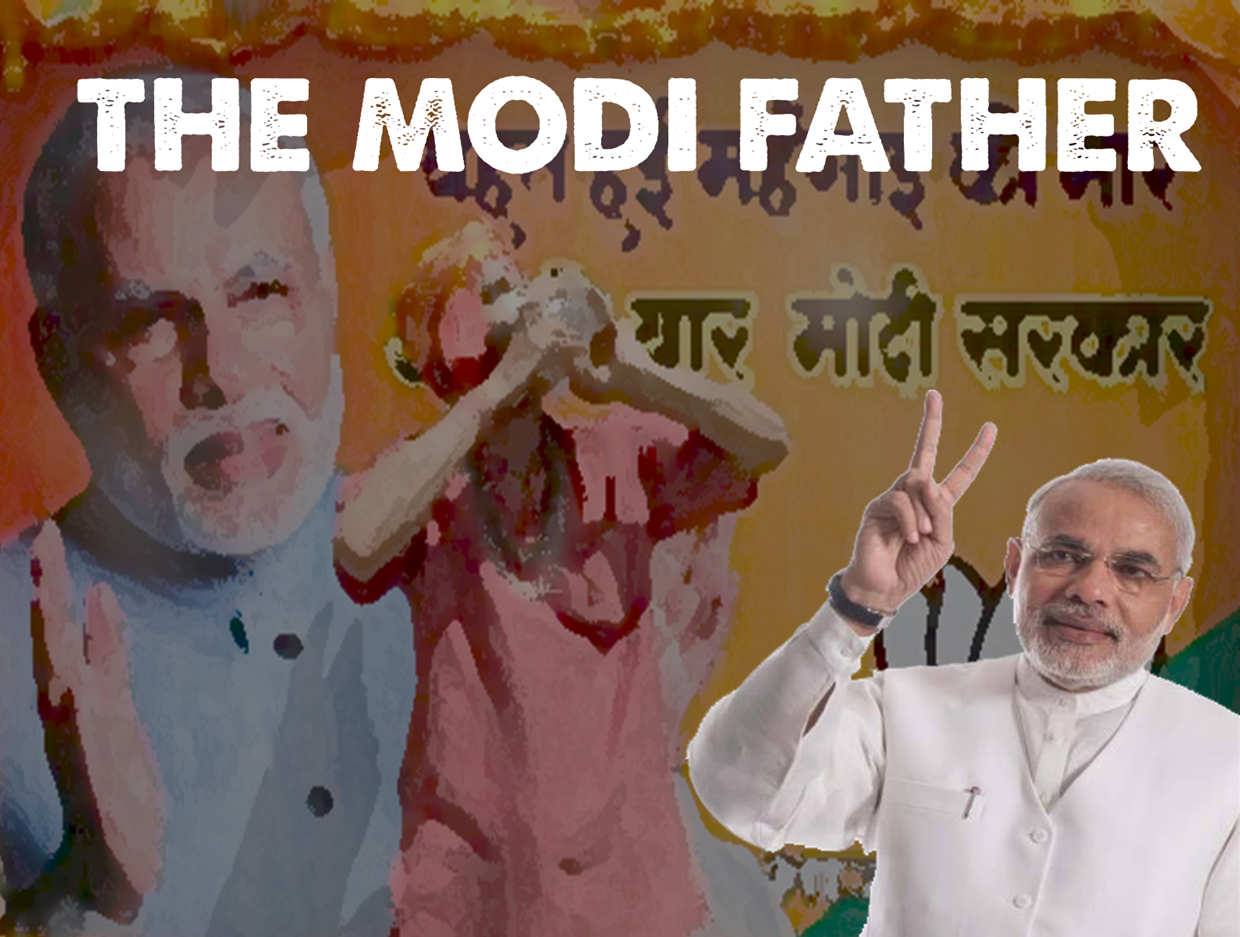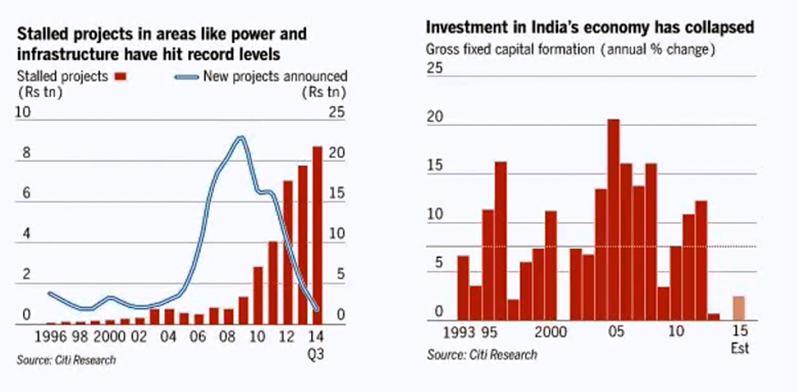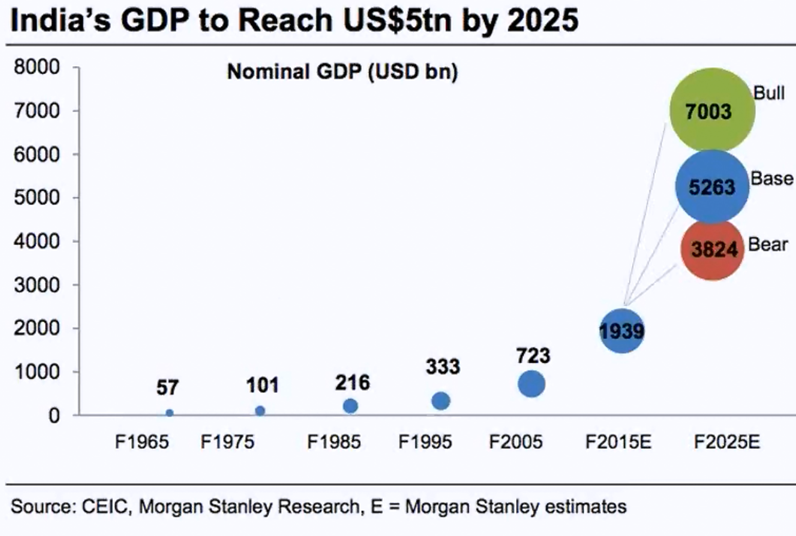 Indian voters are pinning their hopes on their new Prime Minister Narendra Modi, leader of the Hindu nationalist BJP, to make good on his promises – a factor that eventually forced the Congress Party to lose its grip on power and suffer crushing defeat at the hands of its rival.
Indian voters are pinning their hopes on their new Prime Minister Narendra Modi, leader of the Hindu nationalist BJP, to make good on his promises – a factor that eventually forced the Congress Party to lose its grip on power and suffer crushing defeat at the hands of its rival.
Former India PM Manmohan Singh claims that the legacy of his presidency is a far stronger Indian economy compared to that when he took office a decade earlier.
But the octogenarian became susceptible to a string of corruption scandals within his own party as well as political paralysis where he was seen as being too aloof to stop.
Modi will be sensitive and mindful of the short-comings of his predecessor and is already openly talking of a ten-year economic plan for the country. So there’s no doubting his confidence that he’s going to be around for some time to come.
Modi has pledged to strengthen the Indian economy and to make doing business with India easier in order to unlock more Foreign Direct Investment (FDI) flows that can help boost its flagging economy.
But without wanting to declare the honeymoon period over just yet, many voters as well as the global business community are watching Modi very closely for signs that he means business.
Before India can find itself on the road to economic recovery, there are a number of hurdles that Modi will need to overcome.
Immediate challenges facing Modi
Some immediate problems facing Modi are the dramatic slowdown in growth of the Indian economy from the heights of 8-9% GDP growth registered in 2008 to just over 4% growth predicted for 2014 with a modest increase predicted for next year.
 As a result, there’s little room for increasing taxes to help pay for much needed improvements to India’s ailing and fragmented infrastructure that’s holding back its progress to economic recovery and has created a backlog of stalled infrastructure projects.
As a result, there’s little room for increasing taxes to help pay for much needed improvements to India’s ailing and fragmented infrastructure that’s holding back its progress to economic recovery and has created a backlog of stalled infrastructure projects.
In effect Modi finds himself almost immediately in this vicious circle and will need to find a solution if he’s to deliver against his promises in the long term.
 According to the FT’s Mumbai Bureau Chief James Crabtree: “Indian industrial conglomerates are in a really bad way and this has impacted on the banks, many of which are technically bankrupt.”
According to the FT’s Mumbai Bureau Chief James Crabtree: “Indian industrial conglomerates are in a really bad way and this has impacted on the banks, many of which are technically bankrupt.”
As Modi takes the reins of power in India he recognises he can’t deliver on his promises of economic reform without the tacit support of other political parties and powerful figures in the Upper House, including former Bollywood actress Jayalalithaa Jayaram (‘Amma’) the Chief Minister of Tamil Nadu who isn’t the easiest person to deal with and who has an inflated view of her own self-importance judging by her campaign poster.
According to the latest research by the FT, India is an increasingly difficult country in which to do business and is ranked 134 out of 189 economies – down three places in the rankings compared with 2013.
Modi will clearly want to reverse this and some of the issues stem from taxation disputes that many multi-national companies such as Vodafone have found themselves battling.
All this has done is to put off other multi-national organisations from investing in India given the deep level of uncertainty created by disputes around taxation.
Another issue, identified by Goldman Sachs, is possibly the biggest demographic disaster facing India, where almost all of the additions to the global workforce will come from India, somewhere between 65-110m workers over the next decade.
 The issue is how will this influx of workers earn a living? Although car manufacturing has been a success story in India, largely due to Tata Motors, India isn’t that good at producing labour-intensive manufacturing industries such as textiles and white goods that’s helped to propel the South Asian Tiger economies on its borders.
The issue is how will this influx of workers earn a living? Although car manufacturing has been a success story in India, largely due to Tata Motors, India isn’t that good at producing labour-intensive manufacturing industries such as textiles and white goods that’s helped to propel the South Asian Tiger economies on its borders.
According to the FT’s Mumbai Bureau Chief James Crabtree: “Indian industrial conglomerates are in a really bad way and this has impacted on the banks, many of which are technically bankrupt.”
As Modi takes the reins of power in India he recognises he can’t deliver on his promises of economic reform without the tacit support of other political parties and powerful figures in the Upper House, including former Bollywood actress Jayalalithaa Jayaram (‘Amma’) the Chief Minister of Tamil Nadu who isn’t the easiest person to deal with and who has an inflated view of her own self-importance judging by her campaign poster.
Perhaps even more worrying for Modi is the rampant corruption within Government, institutions and across wider Indian society that needs to be tackled head on.
Research by Transparency International shows that India is perceived to be one of the most corrupt countries in the world in which to do business and where bribery has almost become a way of life.
Value of the rupee on international currency markets
 This has a major bearing on companies that are looking to do business in India and the election of Modi has been warmly welcomed by the business community.
This has a major bearing on companies that are looking to do business in India and the election of Modi has been warmly welcomed by the business community.
The main Indian stock market index – the Sensex – is currently trading at record levels. And the rupee is recovering in value after a difficult year or so.
According to the predictions made by Morgan Stanley, Modi should be encouraged to go the whole way and become a radical reformer as only then will India benefit from seeing GDP growth hitting 8% and more over the next decade.
If Modi was able to pull this off, this would have a transformative effect on India as millions of Indians would be lifted out of poverty and this would also have a multiplier effect on the future Indian economy.
 In the FT, Martin Wolf writes that economic growth has averaged 7.5% a year, the fastest in any decade in Indian history. This rapid growth in GDP has raised average incomes by 75% in real, inflation-adjusted rupees. But it hides the truth.
In the FT, Martin Wolf writes that economic growth has averaged 7.5% a year, the fastest in any decade in Indian history. This rapid growth in GDP has raised average incomes by 75% in real, inflation-adjusted rupees. But it hides the truth.
Growth has slowed sharply over the past three years because of the culmination of bad economic policies, while consumer price inflation has risen between 9-11% over the past five years. All of this and the challenges facing Mody as he takes office means that there’s been a failure to create jobs for the 10m young people entering the job market each year.
Conclusion
Mody needs to grasp the nettle and introduce a national value added tax to help raise investment for infrastructure projects, accelerate investment projects, liberate energy prices, release shares in Government owned assets to the public and privatise state run-industries as well as reform the corporate taxation system in order to encourage more FDI.
 The prize for achieving this will be transformational as India’s GDP could top $5tn by 2025, making it one of the largest economies in the world.
The prize for achieving this will be transformational as India’s GDP could top $5tn by 2025, making it one of the largest economies in the world.
If Modi manages to do all of this as well as restore trust and confidence in Government and private institutions, then the future prospects for doing business in India will be the best they’ve ever been for a decade.
















Good write-up. So, if you are interested to make India a far far better place to live – then contribute in what ever way you can. No point in complaining that nothing can be done as far as the 3 Ps exist – population, pollution, politics. Come-up with innovative ideas.
Nice article with excellent statistics.
Ardi
an on apt identification of current scenario, task is tough but not impossible